Edelweiss accident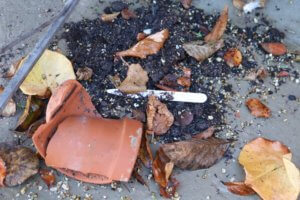
A few weeks ago I experimented with sowing seed from my Edelweiss flowers. I followed advice from members of the Alpine Garden Society, which I have joined. I was excited to see some germination in the pot and whilst it’s possible that the tiny green seedlings could have been weeds, I was hopeful that they may have been babies of this peculiar, but much loved, mountain flower.
I was waiting to see how they developed but next day I found the pot smashed on the patio. I suspect that it may have been knocked off the low wall it was balancing on by an inquisitive squirrel, as it certainly wasn’t windy. If only I’d collected more seed…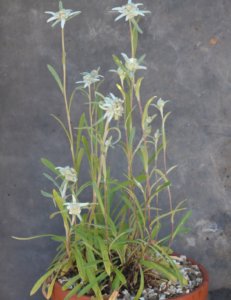
Exotic seedheads
These two seed-heads look like aliens from a Doctor Who episode. If they’re planning world domination through seed dispersal, their plan is almost certain to fail, as they are taking their time to mature.
The seed-head on the left is a Datura. I grew several of these plants from bought seed this summer and they put on an opulent and sweet-smelling display in the greenhouse. As I’m unsure what the a ripe seed head should look like I’m waiting longer before cutting it open to have a look.
The seed head on the right is from a Canna and I do know that this should be dry and brown before the seed can be collected – so this has a way to go yet. I have read that the earliest flowers on a plant produce more viable seed than those that ripen later in the season. Of course I had dead-headed these away long before I learned that little bit of advice. Fingers crossed that they develop as it would be fun to try growing some from seed next year.
Wood Anemone Planting
I have never grown Wood Anemones before, but after seeing a large patch of them by a woodland roadside last spring, I thought I’d give it a go. I decided to plant them at the far end of my garden under a beautiful Copper beech tree, where they will be partially shaded, but should get enough sunlight to open before the leaves emerge on the branches above.
I bought the Rhizomes online, and was amused by their worm-like appearance, but was at a loss to know how best to plant them. Aside from reading advice on soaking the rhizomes first (which I didn’t follow as I read it just before I had a good window of time to get them planted!), and working in plenty of leaf mould or compost to the soil, I didn’t find much detail on how to plant a large patch such as this.
So I worked out a method that would work for me. If you want to read about it in more detail then you can do so here but it involved scraping off the top few centimetres of soil and laying the rhizomes on the roughed up surface, before covering again with soil and leaf mould.
I’m hoping they’ll flower next spring and that I’ll be able to share some beautiful pictures of these pretty flowers with you all.
Hefty Sweet Potato
This week I cooked a tasty sweet potato curry using the hefty tubur I managed to grow in my greenhouse. There was enough left over for roasted sweet potato chips the following day. Two family meals from this one sweet potato is pretty good going.
I apologise for the rather ugly appearance of this vegetable. I like to describe it as a giant pink cashew but my teenage daughter calls a spade a spade and described it rather more indelicately. My amusement at uncovering the giant tubur is recorded on this little youtube clip.
I haven’t researched what you would pay for this weight of sweet potato in the shops but the plant I grew this one from cost me £2.50. It’s touch and go whether this experiment was good value for money but the plant redeemed itself by being thoroughly beautiful and of course involved zero food miles. Here’s a reminder of the flowers and how the plant looked in a corner of my greenhouse in the summer.
Cotoneaster cornubia
This is one of my favourite trees in the garden. Admittedly, my favourite changes with the season but this one does look lovely year round. I love the way its branches arch over like the arms of a ballerina, reaching towards the lawn below. It produces an informal curved pergola over my shrubby top path and adds so much to the garden from so many angles. In winter this structure looks intricate and beautiful. In spring it is covered in white flowers and in autumn it has a golden glow and is smothered in red berries.
By February all the berries will have been eaten by birds. I can see the tree from my desk window, so I will spend many an hour distracted as I watch a wide variety of peckish birds fly in for food.
It almost makes me look forward to winter.
A lesson in being lazy
I don’t call myself the Tea Break Gardener for nothing and I admit to sometimes cutting corners in the garden – or more accurately – not completing tasks properly. A few weeks ago I cut back the unruly, overgrown container display in a few of my pots but didn’t quite get round to emptying them of compost.
This week I noticed that the Antirrhinums, or snap dragons, had sprouted lots of lovely new shoots from where I’d cut them hard back. When a plant fights back like this it has to be respected. I have potted up several lovely plants and given them pride of place in the greenhouse. This Snap Dragon is called ‘Lucky Lips’ and has burgundy speckles on white trumpets.
One packet of seeds, a summer of flowering, and hopefully more flowers next year too – a bargain.
Six on Saturday is a weekly meme – take a look at the comments at the base of host The Propagator to see more ‘sixes’ from other keen gardeners from all over the world.

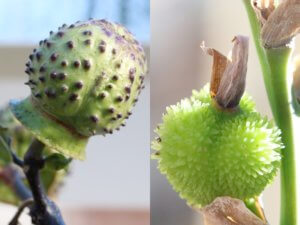
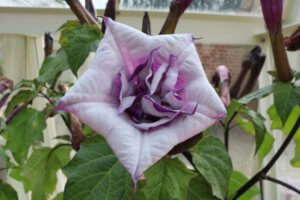
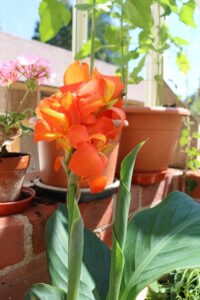
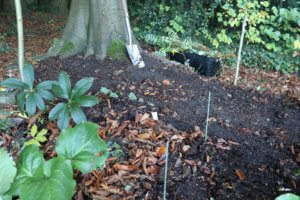
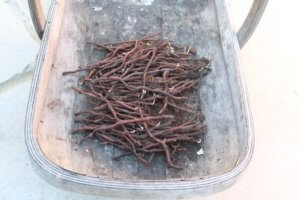
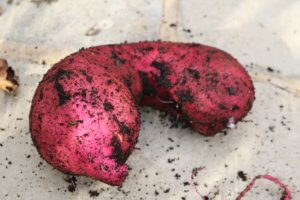
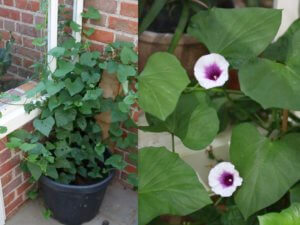
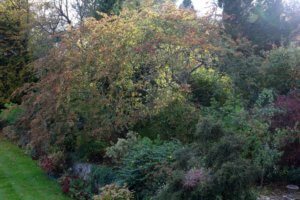
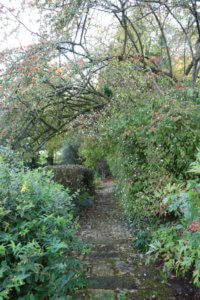
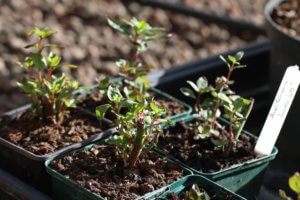
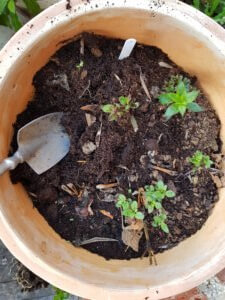

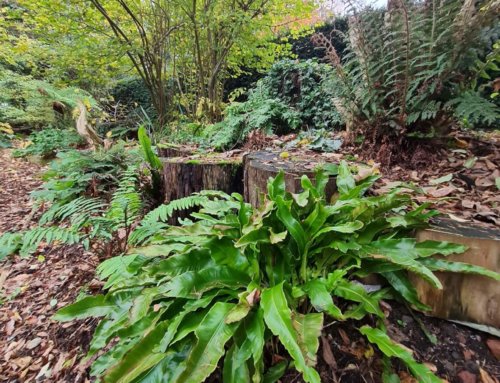
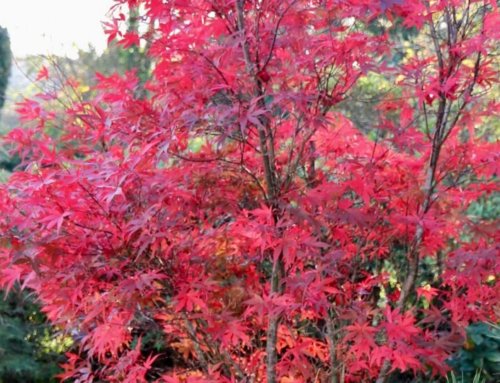
The YouTube video shows how big that sweet potato was. Huge!
Yep, it was a whopper Mala. Tasty too!
Congratulations on the huge sweet potato! It’s funny because I also calculated the number of euros won.
As for the seed heads of Datura, I had the same problem and, as I have plenty of seed heads, I sacrificed one that I thought was ripe and left the others on the plant. The one that I cut went to dry at home (one or two weeks later, I had to remove the soft shell and continue to let the seeds dry). The others, left outside, continued to mature so that one exploded. The soft shell fell to the ground and it was enough for me to cut the stem (all the seeds remained on the top and I put all to dry in the house) Difference: bigger seeds. ( I hope that it’s understandable…) Your turn !
Hi Fred, I think you’re saying it’s better to leave them on the plant but watch as they may burst. They’re in the greenhouse so I can do that no problem. Will let you know how I get on. Thanks for the tips!
Most welcome, keep us posted ! Bye
Love those seed heads!
Hi Barbara – yes they’re great aren’t they. I love the purple pimples on the Datura seedheads. Weird but wonderful.
I think a horror movie could be made from this Six – mystery destruction of tender seedlings, alien looking seed pods, monster sweet potato the colour of pink flamingos & those anemone rhizomes – don’t turn your back! Think I might like to grow that flourescent sweet potato myself.
Hi Lora – yes the Halloween edition!
A very interesting six! I enjoyed watching the inveiling of the sweet potato, which is indeed of rather gargantuan proportions- a couple of soups, I should think. I particularly liked the beautiful view along your garden path as it’s so inviting to walk along.
Yes, it’s a lovely path, Jane. We’re trying to reclaim it and have cut many of the shrubs back a bit and I’m trying to add some interesting plants along the path border. I like the layout of the paving stones. They alternate end on, then side on, then end on etc and have a sort of crazy paving edging. The garden was laid out just before the first world war and has many of the design features described in Gertrude Jekyll’s book ‘Arts and Crafts Gardens’. I have a few pictures from back then and will hopefully share them with readers on this blog.
I too approve wholeheartedly of your snap dragons desire to live beyond its alloted single year. We all love a trier.
I knew this would strike a chord with you!
Yours is the second sweet potato I’ve seen in this weeks sixes, I’m minded to try them. Can you keep the plant going over winter or do you have to buy new each season?
Hi Jim, you have to grow new plants each year- especially if you want to eat your harvest. I bought my plant ready rooted from a garden centre but you can grow them from “slips” – taken from a tubur. I was confused when reading what these slips were but there are a few little you tube clips which shows them well. I grew miy plant in a large pot in the greenhouse – warm and next to the tap so it was well watered. I have seen some UK allotmenteers growing them outdoors and this is what SoS gardener Fred does too. Good luck. It’s fun to try I’d say.